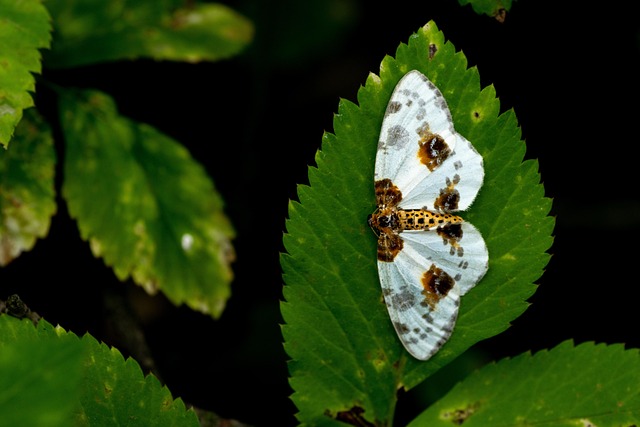Clothes moths can cause significant textile damage, prompting the need for professional extermination services. These experts offer tailored eco-friendly solutions, including targeted treatments, deep cleaning, and natural repellents, to disrupt the moths' lifecycle. Customized plans cater to residential or commercial spaces, providing long-lasting protection against clothes moth infestations without harsh chemicals. This shift towards specialized, sustainable methods ensures an effective yet environmentally conscious approach to clothes moth control.
Tired of saying goodbye to your cherished fabrics due to stubborn clothes moth infestations? This comprehensive guide unravels the intricacies of these recurring pests, offering a multi-faceted approach to prevention. From understanding the behavior and life cycle of clothes moths to exploring powerful professional extermination techniques, we delve into effective strategies for both residential and commercial spaces. Additionally, discover eco-friendly solutions and customized control plans tailored to your specific needs, ensuring a moth-free environment without compromising on safety or sustainability.
Understanding Clothes Moth Infestations: Behavior and Life Cycle
Clothes moths are a common household pest, known for their ability to infiltrate and destroy textiles. Understanding their behavior and life cycle is crucial in effective clothes moth removal. These moths go through four distinct stages: egg, larva, pupa, and adult. The larvae, or caterpillars, are the feeding stage, responsible for consuming fabrics such as wool, silk, and natural fibers. They spin silken cases for protection during this time.
Professional moth extermination services employ various methods, including eco-friendly solutions, to combat infestations. Customized moth control plans consider the unique needs of residential or commercial spaces, offering both short-term relief and long-lasting protection. Clothes moth control services utilize techniques like targeted treatments, cleaning protocols, and behavioral modifications to disrupt the moths’ life cycle and prevent recurring infestations.
Professional Moth Extermination: Effective Strategies and Techniques
Professional Moth Extermination offers effective strategies and techniques for dealing with stubborn clothes moth infestations. Specialized services, like those provided by experienced pest control companies, focus on identifying the source of the problem and implementing tailored solutions. These professionals utilize advanced methods that go beyond simple cleaning, employing eco-friendly solutions to ensure safety while targeting every stage of the moth lifecycle. From residential properties to commercial spaces, customized moth control plans are designed to eliminate existing infestations and prevent future recurrences.
Effective techniques include thorough inspections, where experts locate larvae and eggs hidden in hard-to-reach areas. They employ specialized equipment for deep cleaning, removing fibers and debris that serve as food sources. Additionally, professional treatments involve the use of natural repellents and insect growth regulators to disrupt moth development. These strategies, combined with personalized advice on maintaining a moth-free environment, provide long-lasting protection against clothes moths, ensuring peace of mind for both residential and commercial customers.
Eco-Friendly Approaches to Clothes Moth Control and Removal
When it comes to tackling clothes moth infestations, especially in sensitive environments like homes and commercial spaces, eco-friendly approaches are gaining popularity as effective alternatives to traditional methods. Professional moth extermination services now offer a range of eco-conscious solutions tailored to specific needs, ensuring that cloth moths are removed without leaving behind harmful residues. These methods focus on natural repellents, improved sanitation, and precise targeting to disrupt the moths’ life cycle.
Instead of relying heavily on chemical pesticides, residential and commercial moth treatment plans can incorporate strategies such as using lavender, cedarwood, or other plant-based oils known for their repellent properties. Regular cleaning routines enhanced with these natural solutions create an inhospitable environment for clothes moths. Additionally, professional services design customized moth control plans, addressing the unique challenges of each location, ensuring long-term protection against reinfestation without compromising health or sustainability.
Customized Moth Control Plans for Residential and Commercial Spaces
Many traditional methods exist for dealing with cloth moths, but a growing trend favors tailored, specialized approaches. Customized moth control plans offer a comprehensive solution for both residential and commercial spaces plagued by these pests. These plans are designed to address the unique needs of each property, ensuring an effective yet eco-friendly approach to clothes moth removal.
Professional moth extermination services utilize advanced techniques, including targeted treatments, inspection, and monitoring. Residential moth treatment focuses on identifying and sealing entry points, while commercial moth removal involves a more extensive strategy due to larger spaces and potential health risks. Eco-friendly moth solutions are gaining popularity for their minimal impact on the environment, using natural repellents and non-toxic methods alongside traditional practices to control clothes moth infestations.
Addressing recurring clothes moth infestations requires a multifaceted approach. By understanding the behavior and life cycle of these pests, individuals can implement effective strategies, including professional moth extermination services tailored to residential or commercial spaces. Eco-friendly solutions offer a sustainable alternative for those seeking non-toxic methods to combat these delicate invaders. Ultimately, customized moth control plans that combine behavioral modifications, regular cleaning, and specialized treatments provide the best defense against future infestations, ensuring a clean and pest-free environment.
